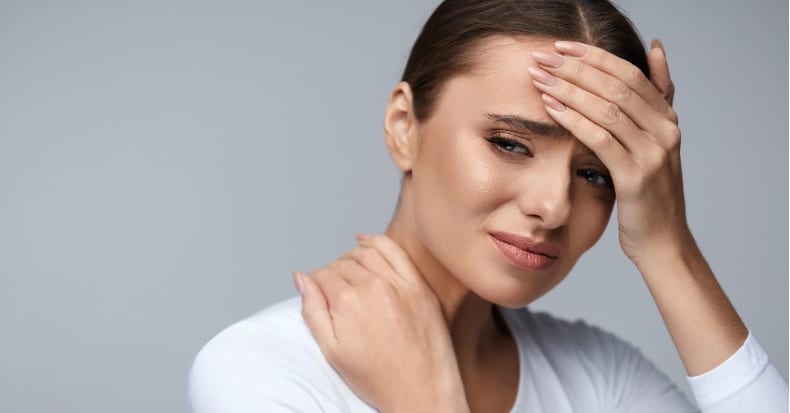Experts estimate that headaches affect half the population, with up to 25% of headaches originating from the cervical spine or neck, which is referred to as a cervicogenic headache (CGH). There are many studies that demonstrate the effectiveness of chiropractic management for CGH, often involving a multi-modal treatment approach to address biomechanical dysfunction in the cervical spine that may contribute to or cause a patient’s headache. These treatment options include…
- SPINAL MANIPULATION THERAPY (SMT): There are multiple methods or techniques of spinal manipulation to improve joint movement that can be sub-divided into two types: high velocity, low amplitude (thrust) where joint noise (called cavitation) occurs; and low velocity, low amplitude (non-thrust) where joint cavitation is not common. Some refer to the later as “mobilization.” Doctors of chiropractic often use both, but ultimately, the decision is decided by provider and patient preference.
- EXERCISE: On its own, exercise does not appear to be as effective as spinal manipulation, but when exercises—especially those targeting the deep flexors—are combined with SMT, the benefits last longer and are more satisfying in the long term.
- OCCIPITAL NERVE FLOSSING: Tension on the occipital nerve as it exits the skull can exacerbate CGH symptoms. Nerve flossing can reduce this tension. While lying on the back with the chin tucked in, the chiropractor lifts the patient’s head and moves the chin toward the chest to stretch the muscular attachments at the base of the skull (which often pinch the nerves that cause headaches) while the patient bends the elbows to touch their collar bones. As the chiropractor lowers the patient’s head, the patient extends their elbows and wrists/hands and lowers the arms toward the floor. This is frequently repeated five to ten times (depending on tolerance).
- ACTIVITY (ERGONOMIC) ADVICE: Here, your chiropractor assesses your work and hobbies, looking for ways to reduce the load on your neck and upper back. Forward head posture is VERY common and once identified, he or she can teach you ways to correct the faulty posture—often by making simple adjustments to the activity.
- HOME CERVICAL TRACTION: Traction works by stretching the vertebra and muscles. Though this can be done in the office, you can do it at home much more frequently. An over-the-door unit works well. Typical treatment time is 15 minutes. Gradually increase the weight to a maximum comfortable point (10-15 lbs. / 4.5-6.8 kg) is a common threshold of tolerance). The “KEY” is to RELAX to get the best effect.
Bottomline: If you suffer from headaches, then it may benefit you to consult with a doctor of chiropractic to determine if your headaches may be caused or exacerbated by dysfunction in the neck. If so, then your chiropractor will have a variety of treatment options available to reduce the frequency and intensity of your headaches.



